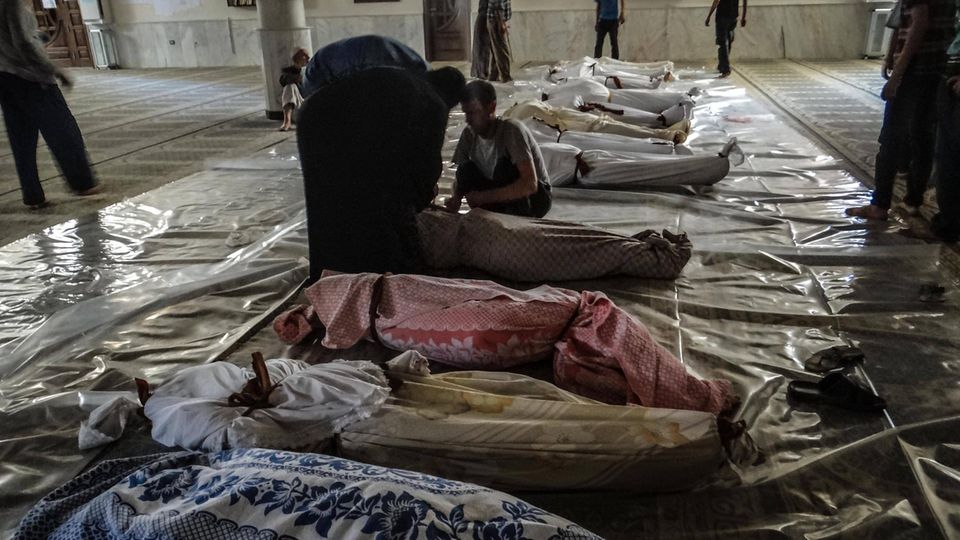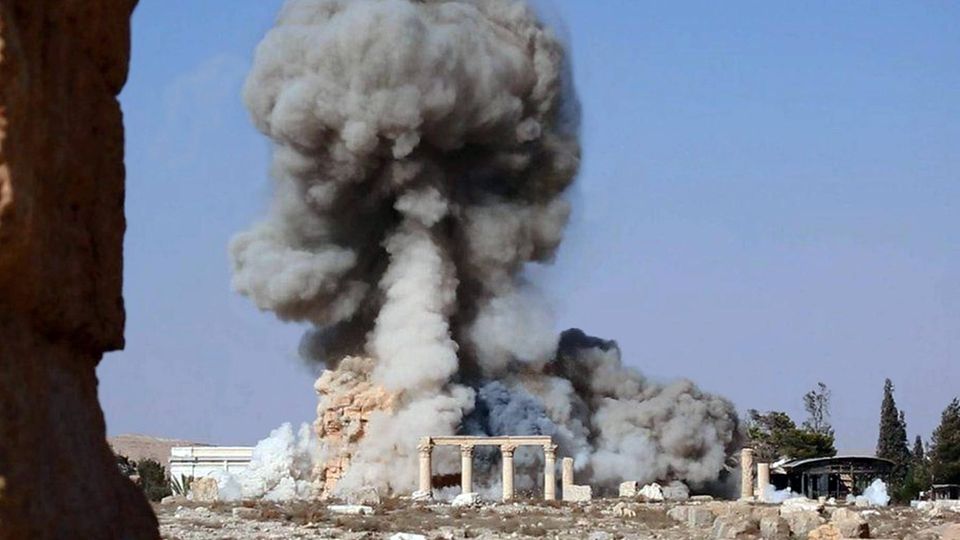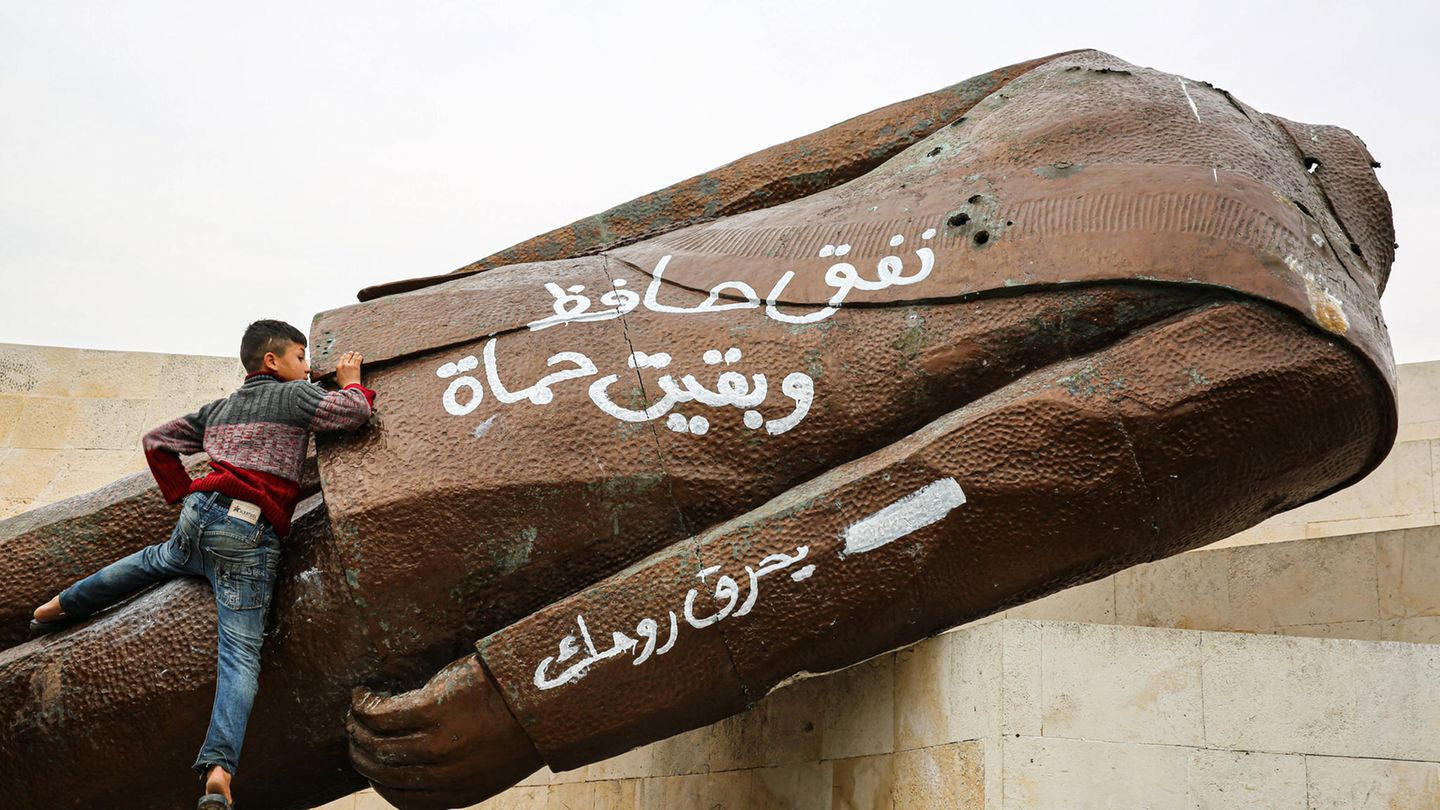Simply explained
These were the most important events in the Syrian civil war
Copy the current link
Bashar al-Assad’s escape marks the climax of a 13-year conflict that began as a civil war. The most important developments at a glance.
13 years of civil war have changed Syria dramatically. Before the war with international participation began, 21 million people lived in the country. Today, the population has thinned out after long years of war: the United Nations estimates that more than half a million people died in the Syrian war. Seven million Syrians fled to neighboring Arab countries, to Europe, Australia or the USA. There are also seven million internally displaced people.
Bashar al-Assad had been in power in Syria since 2000 and took over as president after the death of his father Hafez al-Assad. There was great discontent among the population at the beginning of the 2000s: political opponents of the regime were persecuted, meetings were banned and the media was censored. More than half of the population was under 25 years old; Despite good school education, unemployment was 25 percent. In this initial situation, the Arab Spring destabilized the regime of ruler Assad.
The Arab Spring
The wave of protests against the authoritarian governments in Tunisia, Egypt and Libya in spring 2011 also reached Syria. People demonstrated peacefully for democracy and civil liberties and demanded better living conditions. But the protest went differently than in neighboring Arab countries. “The people want the overthrow of the regime,” young people sprayed graffiti on a house wall in Daraa, a rural town in the southwest of the country. Assad’s troops then escalated the tense situation: the young people were arrested and tortured by the secret service. In response, protests were organized across the country. Security forces fired into the crowds, killing hundreds of civilians. At the end of July 2011, deserters who refused to fire on their own people formed the “Free Syrian Army”. Together with Kurdish militias, they fought against the regime and took control of the north and east of the country.
The use of poison gas
On August 21, 2013, residents of a Damascus suburb heard loud explosions. They suspected a bomb attack, many of them took refuge in their cellars to supposed safety – and suffocated there. The weapon: the poison gas sarin. United Nations chemical weapons inspectors found evidence of the use of surface-to-surface missiles that were only available to the Syrian government. However, Bashar al-Assad denied the accusation that he had poisoned his own people. A final clarification was not possible. The “Syrian Network for Human Rights” recorded 1,514 deaths and 12,000 injuries from poison gas attacks during the course of the civil war.

A war of confessions
Initially, the lines of conflict in Syria ran along religious or ethnic lines. Before the civil war began, 64 percent of the population were Arab Sunnis and 14 percent Kurdish. The government around the Assad clan belongs to the Shiite Alawites, who made up around 10 percent of the population. The Sunnis wanted more influence. The “Free Syrian Army” was soon displaced by jihadist groups. From 2013 onwards, the Islamic State, which had emerged in Iraq, also appeared in Syria – it conquered the east of the country and proclaimed a caliphate. Self-proclaimed fighters from abroad joined the IS fighting groups, including from Germany. With attacks in other European countries, the conflict took on an increasingly international dimension.

A war of proxies
Various major powers are involved in the conflict in Syria. Sunni Saudi Arabia supported the insurgents, as did Israel and the USA. Shiite Iran, the Lebanese Hezbollah and Russia, on the other hand, support the Assad regime. Turkey also plays an important role in the conflict: It is taking military action against Kurdish militias on the Turkish-Syrian border who are striving for autonomy. The involvement of the USA and Russia in the conflict is paralyzing the work of the United Nations Security Council. Over the past thirteen years, resolutions have been blocked or significantly weakened. The efforts of a number of special envoys for Syria, namely Kofi Annan, Lakhdar Brahimi, Staffan de Mistura and, since 2019, Geir Pedersen, also remained unsuccessful. Peace talks between the conflicting parties repeatedly failed. The influence of the United Nations is therefore limited to humanitarian aid.
The Destruction of Palmyra
The destruction of the UNESCO World Heritage Site of Palmyra caused international consternation in 2015. The Islamic State captured the Greco-Roman city in the Syrian desert and blew up much of the ruins. A destruction with symbolic power: The Islamists largely erased evidence of Syria’s cultural diversity. A temple is said to have been converted into a prison with a courtroom, Palmyra’s chief archaeologist, 82-year-old Khaleed al-Assaad, was beheaded and his body hung in the ruins.

Pushing back the Islamic State
During the war, the Islamic State committed numerous war crimes – including mass murder and torture – in both Syria and Iraq. The forces of the Syrian government and the international anti-IS coalition led by the USA managed to push back the Islamic State fighters. Since 2020, the Assad regime has again controlled much of the country. But around 10,000 jihadists are said to have gone into hiding in the Syrian desert and are still there.
Pandemic and war
After more than ten years of war, the Syrian infrastructure has been destroyed and health facilities have been bombed. The outbreak of the coronavirus pandemic in 2020 affected a vulnerable population who also suffered from a rampant cholera epidemic. In 2022, 90 percent of the Syrian population lived in poverty and 60 percent suffered from hunger. In 2023, Syria was also shaken by a severe earthquake. Ruler Bashar al-Assad is dependent on Russia and Iran, but the resources of his supporters are tied up elsewhere: Russia is waging a war in Ukraine, Iran is involved in the war in Gaza.
The images of a historic day in Syria

“Hafiz perish,” is written on the fallen statue of the former dictator in Hama. Hafiz al-Assad came to power in a coup in 1970, and his face, together with that of his son and successor Bashar al-Assad, adorned countless posters, murals and statues in the country. Now Syrians are celebrating a future without the Assads
© xJumaxMohammadx / Imago Images
Back
Further
The end of Assad
On November 27, 2024, an alliance of Islamist rebels with contacts to the Turkish military launched an offensive – on December 7, 2024, they reached the capital Damascus. Bashar al-Assad is said to have left Syria. The collapse of his regime is being celebrated by Syrian opposition members in exile around the world. How the balance of power in Syria will now develop is unclear.
Source: Stern
I have been working in the news industry for over 6 years, first as a reporter and now as an editor. I have covered politics extensively, and my work has appeared in major newspapers and online news outlets around the world. In addition to my writing, I also contribute regularly to 24 Hours World.




